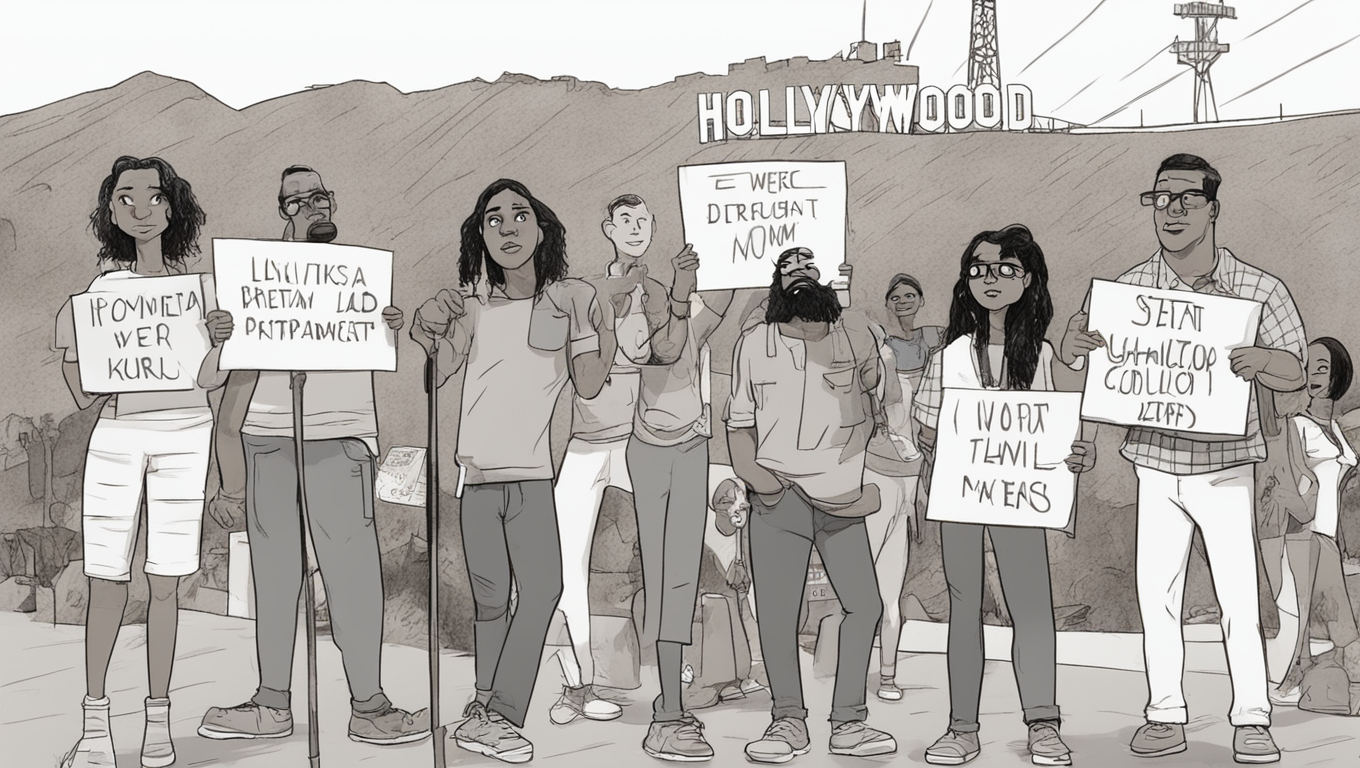“In the good old days,” reminisced Jeffrey Katzenberg, co-founder of DreamWorks and former Disney CEO, “it took 500 artists five years to make a world-class animated movie. I don’t think it will take 10% of that three years out from now.” This statement from Katzenberg reflects the rapid advancements in generative artificial intelligence (AI) tools in the Hollywood industry. However, these advancements have not come without concerns from industry professionals who fear job displacement and the potential misuse of their creations.
The U.S. film, television, and animation industry employs approximately 550,000 individuals, and the industry’s heavy reliance on technology makes it particularly susceptible to AI-driven changes. A survey conducted by consulting firm CVL Economics found that 75% of industry bosses had reduced, eliminated, or consolidated jobs after introducing AI into their workflows. Labor groups representing animators, cartoonists, and other Hollywood artists have commissioned studies on the impact of AI and are now demanding rules to govern the deployment of AI tools in film studios.
“We are being threatened by replacement with tools that are not qualified to replace us,” said Mark Patch, an organizer with the visual effects (VFX) union. Unions representing animation and visual effects workers are pushing to include AI rules in their contract negotiations to protect their interests. They acknowledge that AI-powered tools have the potential to improve efficiency for repetitive tasks but are concerned about studios replacing their work with subpar AI versions. Additionally, they worry that AI tools may be trained on their original creations without giving proper credit or compensation.
The battle over AI in Hollywood extends beyond job security concerns. Labor agreements and actions have become crucial battlegrounds in shaping the future of AI in society. Sarah Myers West, the managing director of the think-tank AI Now, emphasizes the significance of these contracts: “Increasingly it’s union contracts and labor actions that are setting the terms under which AI tools are going to be deployed in the real world.”
While the animation industry has adapted to previous technological changes, such as the introduction of computer-generated tools, generative AI presents novel challenges. Studio executives can now generate images and videos from simple text prompts, using models that may have been trained on the work of the very artists they seek to replace. The animation union has previously won protections in contracts, including retraining requirements and limitations on team replacements. However, a study by economist Adam Fowler reveals that generative AI tools are encouraging executives to consider replacing 3D modelers, graphic designers, storyboard artists, and other positions.
Despite the concerns raised by industry professionals, some aspiring filmmakers see potential in AI tools. For those with small budgets or independent filmmakers, these tools can open up new opportunities to visualize projects and pitch them to studios or funders. Nem Perez, an independent filmmaker in Los Angeles, created the app StoryBlocker, which allows filmmakers to use generative AI tools to mock up their ideas. Perez suggests that these tools can democratize the filmmaking process, providing access to visualizing projects that were previously limited to big-budget studios.
However, the legality of using generative AI tools for commercially released films remains uncertain. Several legal challenges claim that this technology violates U.S. copyright law by training on other people’s intellectual property. The umbrella union IATSE, which represents animation and visual effects workers, has called on Congress to strengthen copyright rules to prevent the unrestricted use of its members' copyrighted work in training AI models.
As Hollywood grapples with the possibilities and challenges presented by AI, the Animation Guild is conducting surveys to gauge its members' concerns and develop strategies to address them. Beyond the fear of being replaced, workers are also concerned about the environmental impact of AI technologies. Brandon Jarrat, a member of the Animation Guild’s AI strategy committee, questions the resource consumption of AI tools, asking, “Every time you prompt AI, how much water is used, how much power is consumed?”
The future of AI in Hollywood relies on a delicate balancing act between embracing technological advancements and ensuring the protection of workers' rights and creative contributions. Ultimately, it is through ongoing negotiations, labor actions, and the determination of industry professionals that the terms under which AI is deployed in the entertainment industry will be defined.





Use the share button below if you liked it.